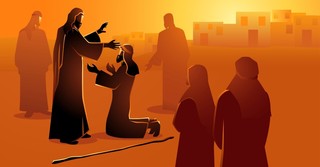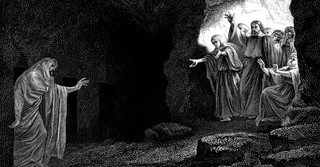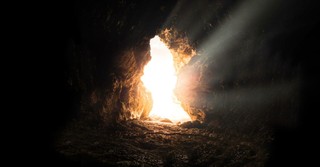7 of Jesus’ Most Incredible Miracles
Share

Some people cannot bring themselves to believe in miracles. To them, the world goes on in its usual processes. So, when they read or hear someone talk about the miracles in the Bible, they dismiss them as mere fabrications or tricks. Surely, they argue, there must be a natural explanation.
Our Lord did many amazing acts during His earthly ministry, acts that cannot be easily shrugged off. Some may think He was merely a prophet or great moral teacher, but they cannot deny that the Bible includes numerous miraculous deeds done by Jesus. All of them are important signs that prove His Messiahship and divinity. However, a few stand out as some of the most remarkable miracles from His ministry, and even of all Scripture.
These acts display the power of Christ, demonstrating that He is much more than a prophet, moral teacher, or just a good man. He is the Son of God who is Lord over all. May we consider the following incredible miracles and decide what we believe about Jesus Christ.
Photo credit: Unsplash/Greg Rakozy

1. Calming the Wind and Sea
As Jesus and the disciples traveled in a boat across the Sea of Galilee, a storm came upon them. Many of the disciples were experienced fishermen and were accustomed to sailing the waters. However, the squall that hit them was intense. Scripture tells us that “the waves broke over the boat, so that it was nearly swamped” (Mark 4:37). The disciples were convinced they were all going to drown.
Throughout these events, the Lord was asleep in the stern of the boat. He was unbothered by the splashing waves and furious winds. But when the disciples woke him, Jesus responded to their pleas for help by standing up and rebuking the waves and wind. He quieted the waters and storm with a command, and nature listened (Mark 4:39-40).
Of course, the disciples knew about the stories of the Old Testament, of miracles over nature, such as the parting of the Red Sea and the day the sun stood still during the time Joshua led Israel. All of these events, though, were done by God. Therefore, when they saw that Jesus had authority and power over the created world, they could not help but recognize that Christ was more than a mere man (Mark 4:41). This miracle demonstrated Jesus’ divinity.
Photo credit: ©Getty Images/John M Lund Photography Inc

2. Releasing a Man from a Legion of Demons
The miracles did not stop in the boat. Once they landed in the region of the Gerasenes, they encountered a man who was possessed by demons. This man was so badly oppressed by the evil spirits that he could not live among others and had to be chained – no one could control him. Every day, he cried out and the demons made him cut himself with stones (Mark 5:5).
When Jesus commanded the demons to come out, they pleaded with the Lord. Fearing their fate of being sent back to the abyss, Legion (for that is what the demons called themselves) requested that they be sent into a herd of pigs. Jesus agreed and freed the man from being possessed and tortured by the evil spirits. And as commanded, the demons entered the pigs, causing them to rush off a bank and into the lake below (Mark 5:11-13).
Once the word spread about the pigs, people crowded around to see what had happened. The people saw the well-known demoniac, but he was no longer possessed. As Mark wrote, the man was “dressed and in his right mind” (Mark 5:15). Such a miracle was frightening to the people; they requested that Jesus leave (Mark 5:17).
Although the people from that region feared Christ’s power, the man who had been possessed was overwhelmingly grateful and wanted to leave with Jesus. But the Lord had others plans for him. As instructed, the freed man went back home and declared to others the wonderful things Jesus had done for him (Mark 5:19-20).
Not only did Christ have power over nature, He also had authority over demons and the spiritual realm. Every time He freed someone from the oppression of an evil spirit, He showed that He is more powerful as the mighty Son of God.
Photo credit: ©Getty Images/Bruno Guerreiro

3. The Feeding of the Five Thousand
Thousands of people had followed Jesus to a solitary place. Our Lord had gone there to spend time alone after the loss of John the Baptist, who had been beheaded by Herod Antipas. When He saw the crowds and their need, He had compassion on them (Matthew 14:14). He provided healing and teaching in that solitary place.
Yet they had traveled so far and had stayed so long. They could not return to their homes in time to buy food and drink. Thus, Jesus told the disciples to give the people something to eat – a task they could not complete due to lack of food. All they could find were two fish and five loaves of bread (Matthew 14:17). What they had not yet understood was that the Lord and His Kingdom operate from a place of abundance. The One who created all things was more than capable of providing food for over five thousand people.
Amazingly, Jesus multiplied the loaves and fish so that there was enough to feed every person, which included the five thousand men and their wives and children. Plus, there was food to spare. The disciples collected “twelve basketfuls of broken pieces that were left over” (Matthew 14:20). Jesus had multiplied the food in abundance, reflecting His great generosity.
A similar event occurred at another time when Christ fed four thousand people with seven loaves of bread and a few fish (Matthew 15:29-39). No one else could have miraculously increased the amount of food except Him. These acts display His power – yet at that time few fully understood what they had experienced. The crowds pursued Jesus because they desired food (John 6:26), and the disciples worried about their bread supply (Matthew 16:8-11). Despite seeing the awesome act of the Lord, they did not grasp what this meant about Jesus’ identity.
Photo credit: Unsplash/Kate Remmer

4. Jesus Walking on Water
After the feeding of the five thousand, Jesus sent the disciples ahead in the boat while He stayed behind to pray on a mountainside (Matthew 14:22-23). The disciples had already made it a considerable distance in the boat when they saw something they did not expect. Near dawn, as they sailed against the wind, they saw Christ walking on the lake. They were afraid and assumed that they witnessed a ghost. Who else could have appeared on the waves of the water?
Jesus spoke to them, encouraging them not to be afraid. It was only Him (Matthew 14:27). But they still doubted what they saw. No one had walked on water before; it was impossible. So, Peter proposed a test: “’Lord, if it’s you,’ Peter replied, ‘tell me to come to you on the water’” (Matthew 14:28). At Christ’s command, the fisherman stepped out onto the waves, the water he had so often sailed across, and walked toward the Lord. If he kept his focus on Jesus, he was able to walk as if on solid ground. But when he saw the waves around him, he began to sink. Jesus rescued him and together they reentered the boat.
Again, the disciples were witnesses of the power of Christ. Not only was He Lord over diseases and demons, providing healing with a mere spoken word, but He could control nature. He could even walk on water. So, they did what we all should do when reading this account – worship Jesus. They fell at His feet in worship, declaring His identity as the true Son of God (Matthew 14:33).
Photo credit: ©Getty Images/Ryan Rad

5. Giving Sight to a Man Who Was Born Blind
After noticing a man who was blind from birth, the disciples wondered why this man had been afflicted in this way. Was it because of his sin or something his parents had done? The disciples assumed that the physical infirmity had to be caused by a wrongdoing – a faulty assumption that many still have today. Jesus corrected this view, telling the disciples that neither was true. Instead, the man had been born blind “so that the works of God might be displayed in him” (John 9:3).
Jesus made mud and placed it on the blind man’s eyes. Then, he told the man to wash in the pool of Siloam. He obeyed and came back seeing. As the blind man later told the Pharisees, he once was blind but now could see (John 9:25).
This miracle caught the attention of the neighboring people because they regularly saw him begging in the streets. How was it that he could now see? To investigate the matter, the Pharisees questioned the man’s parents, who affirmed he was their son, but would not elaborate further. When the former blind man was questioned, the Pharisees heard about Jesus’ miraculous deed. The man followed a wiser line of logic than his interrogators, though, for he knew that a person born blind had never been healed before (John 9:28-33).
So, when Jesus met him again and revealed Himself as the Son of Man, the former blind man placed faith in Jesus and worshiped Him (John 9:35-38). The man’s eyes had been opened physically and spiritually. As for the Pharisees, though, they continued to suffer from spiritual blindness since they did not recognize the significance of the act (John 9:41).
Photo credit: ©Getty Images/rudall30

6. The Resurrection of Lazarus
Mary and Martha had sent word to Jesus: their brother, Lazarus, was sick. They did not ask Him to come and heal their brother, but we can imagine them thinking of the numerous people Christ had already healed. People constantly came to Him seeking wholeness and restoration of health. The Lord did not go at once, though; He waited two more days before traveling to Bethany (John 11:6-7). By then, He knew Lazarus had died.
The sisters told the Lord the same thing when they saw Him. If He had been there earlier, Lazarus would not have died (John 11:21, 32). Certainly, the One who healed the sick and restored sight to the blind could have prevented their brother from dying. Jesus wept alongside them, sharing the pain of grief (John 11:35). Even as He did, though, there was a greater purpose at work. Jesus reminded Martha that all who believed in Him would live even if they died, for He is the Resurrection and Life (John 11:25-26).
At the tomb of Lazarus, who had already been dead four days, Jesus prayed and commanded the people to roll away the stone. And then, He commanded the beloved brother to come out (John 11:38-43). Crowds watched as Lazarus, who was still wrapped in burial cloth, stepped out of the tomb alive (John 11:44). Jesus had raised him from the dead.
Christ was glorified through this event because many who saw the event placed faith in Him, and many more who came to see Lazarus alive and eating with his sisters were convinced of Jesus’ identity as the Messiah (John 11:4, 45). He proved to be Lord over nature, illness, demons, and even death itself.
Photo credit: ©Getty Images/wynnter

7. Jesus’ Resurrection
Jesus’ followers did not know what to think after He was arrested, tried, and crucified. They had thought He would become King of Israel and establish His Kingdom. The Lord had even ridden into Jerusalem on a donkey and her colt as crowds waved palm branches – a fulfillment of Zechariah’s prophecy (Zechariah 9:9). But Jesus had been killed and was buried in a tomb. What could a dead Messiah do? Everything seemed hopeless.
What they understood later was that Christ had to die, to suffer and endure the punishment of sin for all. He was the perfect Lamb of God, slain for the sins of the world (John 1:29). The entire Bible spoke about the Son of Man suffering and being killed, but it also spoke of something else – resurrection (Luke 24:44-47).
On the third day, Jesus rose from the dead. The women discovered that the tomb was empty, and the stone had been rolled away. Easter Sunday all those years ago was the greatest miracle of all, for Jesus had been resurrected. As the angel told the women, “He isn’t here! He is risen from the dead, just as he said would happen. Come, see where his body was lying” (Matthew 28:6).
People had been resurrected before, such as the widow’s son and Lazarus. The difference, though, was that those individuals would, and did, die again. Our Lord is forever alive, the first fruits of the resurrection (1 Corinthians 15:23). He accomplished what He said He would: lay down His life and take it up again (John 10:18).
The Christian faith rests upon the fact that Jesus Christ is resurrected, forever alive in a physical human body while also remaining God the Son. Therefore, if we deny miracles, dismissing them as superstition or examples of ancient ignorance, then we are denying that our Lord is risen. And if He is not raised, then there is no hope for anyone (1 Corinthians 15:13-15).
Miracles might seem like a topic that people can disagree on. However, the identity of our Savior and what He accomplished on the cross and through the empty tomb is brought into question once we start entertaining theories that promote a more naturalistic or “intellectual” response. Jesus said that all of us who believe, yet who have not seen (in contrast to Thomas’ demand for physical proof), are blessed (John 20:29). The Gospels were written as historical, reliable records to encourage and spur on our faith.
So, may we not make light of the miracles of our Lord. He is the One who walked on water, gave sight to the blind, calmed the wind and waves, and who physically rose from the dead. Only because He is the Risen Savior do we have a living hope (1 Peter 1:3).
How do you personally respond to the idea of miracles today? Do you believe they still happen, or were they just for confirming Jesus’ identity back then? See what other believers think and join the conversation on Crosswalk Forums!
Photo credit: Unsplash/Bruno van der Kraan
